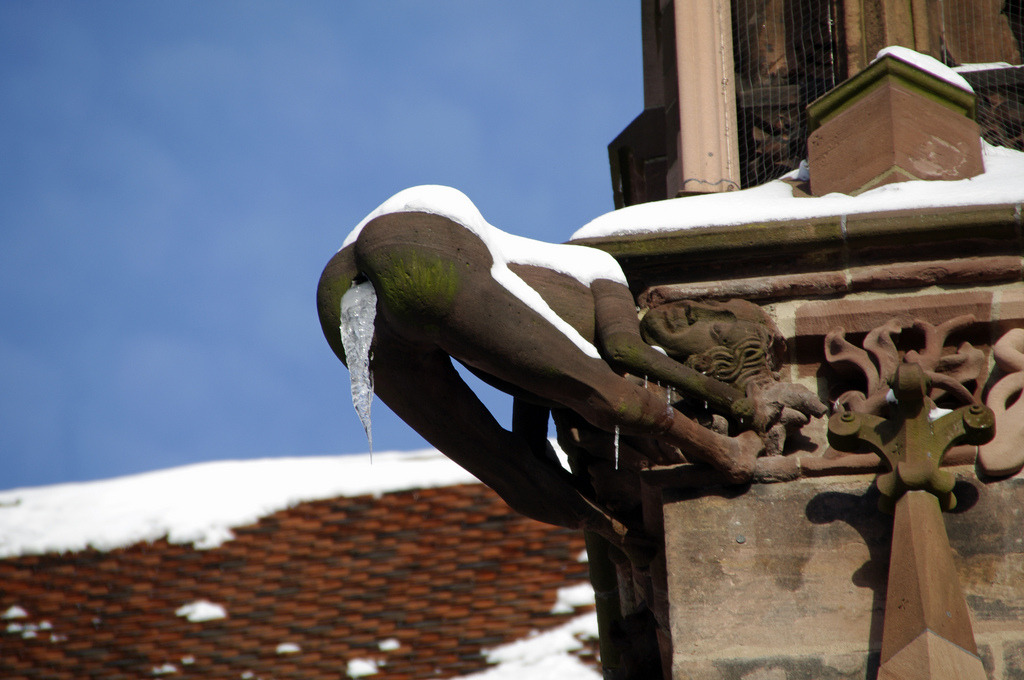In the heart of the historic city of Freiburg im Breisgau, Germany, nestled amidst the towering spires and Gothic architecture of the Freiburg Minster, lies a whimsical and enigmatic figure that has captured the imagination of locals and visitors alike—the famous mooning gargoyle.
Legend has it that during the construction of the Freiburg Minster in the late Middle Ages, tensions ran high between the stonemasons and the city council. Frustrated by low wages, poor working conditions, and disagreements over the project’s design, the stonemasons sought a creative outlet for their grievances.

In a bold act of defiance and revenge, one clever stonemason sculpted a mischievous gargoyle, hidden amongst the intricate carvings adorning the exterior of the minster. Unlike the fearsome creatures typically depicted in Gothic architecture, this gargoyle bore a cheeky grin and a bare bottom, proudly baring its backside to the city below.
When the city council discovered the scandalous addition to their beloved minster, they were outraged and demanded its removal. However, the stonemasons cleverly argued that removing the gargoyle would compromise the structural integrity of the building, forcing the city council to begrudgingly accept its presence.

Over the centuries, the mooning gargoyle has become a beloved symbol of Freiburg’s rebellious spirit and the resilience of its people. Visitors flock to the Freiburg Minster to catch a glimpse of the infamous gargoyle, snapping photos and sharing stories of its origins with friends and family.

Today, the mooning gargoyle stands as a testament to the enduring power of art and humor to challenge authority and inspire change. It serves as a reminder that even in the face of adversity, creativity and wit can triumph over oppression, leaving an indelible mark on history for generations to come.